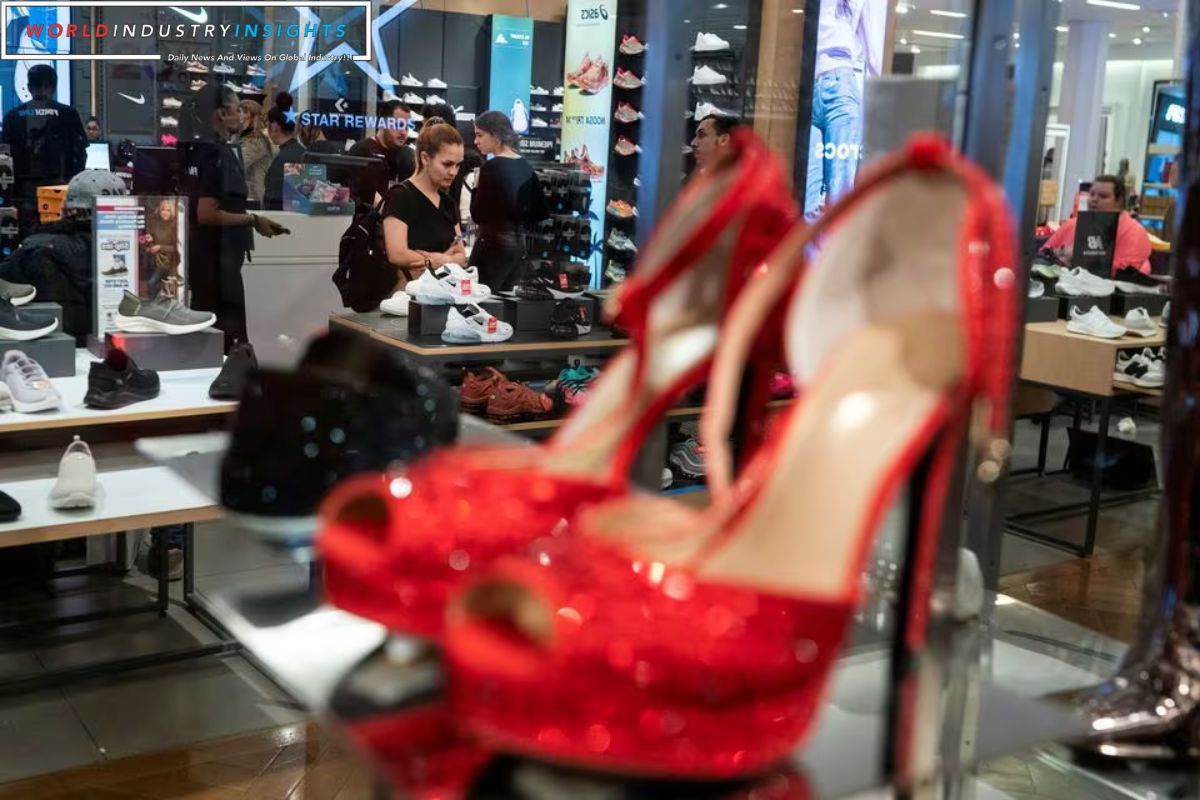Luxury Retail Faces Unease: Luxury retailers, including iconic names like Bergdorf Goodman, initiated early holiday discounts on Fifth Avenue, triggering apprehensions of a subdued Christmas that could potentially result in an excess of inventory. Such concerns raise the specter of a discounting spiral that may compromise the esteemed image of luxury labels.
The latest U.S. credit card data from Barclays, unveiled on Wednesday, painted a somber picture for luxury spending in November, indicating a year-on-year decline of 15%, following a 14% dip in October. Analysts at Barclays express caution for the fourth quarter, citing these weak trends in the U.S. as reasons for apprehension regarding the performance of luxury brands during this crucial period.
Citi’s credit card data, also released on Wednesday, aligns with this sentiment, revealing a 9.6% year-on-year decrease in luxury fashion purchases in November, following an 11.4% decline in October. The decline is steeper in department stores and online, registering a 13% drop in November year-on-year.
Olivier Abtan, a consultant with Alix Partners, notes that retailers entered the holiday season with excess inventory, attributing this situation to last year’s purchasing orders made before a cooling-off period in the sector post a post-pandemic splurge. Share prices of major players like LVMH, Kering, and Burberry have seen declines of 12%, 23%, and 33%, respectively, since early August. Meanwhile, shares in Farfetch, the e-commerce operator, have suffered a substantial loss of value, down 90%.
Also Read: UK Retail Faces Slowdown: Black Friday Fails to Ignite Spending Amid Cost-of-Living Squeeze
Geopolitical uncertainties, including the Middle East conflict, add to the challenges in the luxury industry. Inflation and tightened consumer spending in the U.S. and Europe, coupled with a property crisis disrupting post-pandemic expectations in China, further cloud the outlook.
The end-of-year season, crucial for luxury sales, may not shape up well, as November and December contribute to 25% of annual sales. Department stores, particularly in the U.S., could feel the pinch with slowing demand, potentially impacting luxury brands that heavily rely on external sales networks.
However, analysts emphasize that leading global brands like Hermes, Chanel, Louis Vuitton, and Dior maintain control over their brand image by selling predominantly through their own stores, avoiding discounts. Direct-to-consumer sales have increased from 40% in 2019 to 52% in 2023, providing a more controlled retail environment.
Despite challenges, luxury fashion houses are deemed better equipped than during the 2008-2009 crisis. The integration of artificial intelligence for sales predictions, streamlined production, and adaptability contribute to a more resilient landscape. While the end of the year may attract bargain seekers, it may not herald the markdown season of the century, predicts luxury consultant Mario Ortelli. Technology, notably AI, plays a decisive role in avoiding overstock issues, providing a more nuanced and agile approach to the evolving luxury retail landscape.
Our Reader’s Queries
How do luxury brands make people feel?
Luxury brands have a unique ability to tap into our subconscious and evoke emotions that make us feel special and connected. Wearing brand pieces can give people a sense of control over their life and environment, leading to increased self-esteem and confidence. The power of these brands lies in their ability to make us feel like we are part of something exclusive and elite. By utilizing uncommon terminology and short sentences, this content is easy to read and understand, even for a child.
What is the psychology behind luxury shopping?
There are various reasons why individuals purchase luxury items despite their financial limitations. These include an irrational desire, the perceived superior quality, the boost in self-esteem, and a sense of achievement.
Is luxury fashion declining?
According to the latest credit card data from Barclays in the U.S., spending on luxury goods continued to decline in November, with a year-on-year decrease of 15%. This follows a 14% drop in October.
What luxury brands see a drop in the US?
According to Bank of America, luxury fashion spending in the US has decreased by 16% year-over-year, while market stocks have dropped by 17% from their previous peak. This decline can be attributed to China’s economic struggles this year, as reported by BoF.

